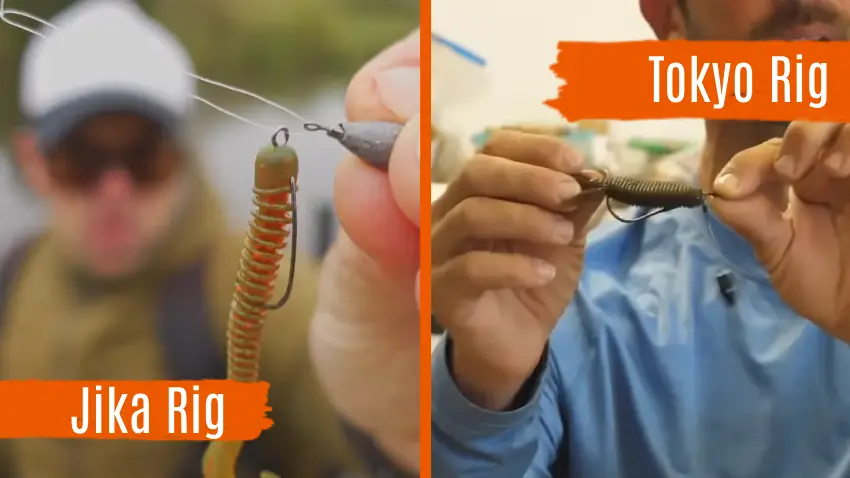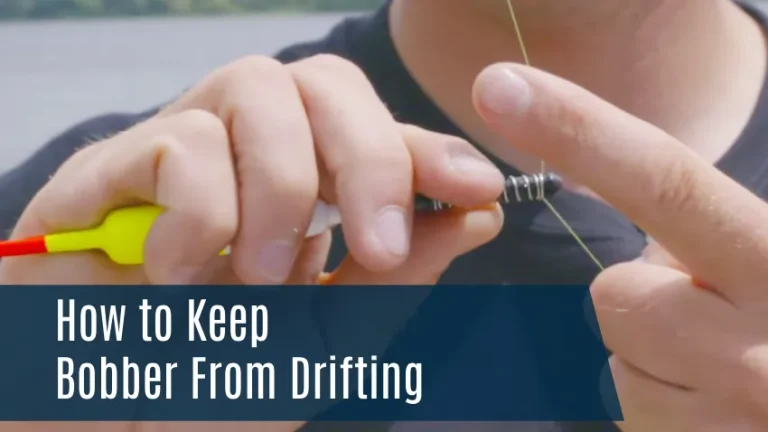Jika Rig vs Tokyo Rig for Fishing: 8 Differences
Jika Rigs and Tokyo Rigs have captured the attention of anglers seeking versatility and innovation in the dynamic world of bass fishing. Per my findings, these finesse fishing rigs have different configurations, rigging processes, and underwater presentations.
The Jika rig is like a nimble ninja, designed to stealthily navigate underwater obstacles. It features a bullet weight attached to the line, allowing for a more natural presentation of your bait.
Conversely, the Tokyo rig is like a powerful samurai, ready to conquer any fishing challenge. It consists of a swivel, a weight, and a hook, giving you the flexibility to customize your setup.
Both rigs have unique strengths and applications, making them essential tools for anglers. So, let me dive deeper into these two fantastic fishing rigs and help you understand their differences.
8 Differences Between Jika Rig and Tokyo Rig for Fishing
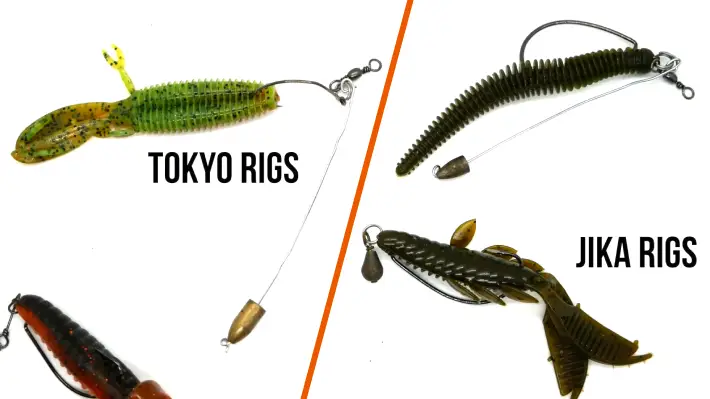
According to my research, Jika and Tokyo rigs have a few key differences. Let me explain each one in detail:
- Component variation
- Rigging process
- Underwater presentation
- Heedlessness and snag resistance
- Versatility in applications
- Weight placement
- Entry into cover
- Adaptability in retrieve
No 01: Component Variation
The Jika Rig incorporates a worm hook, split ring, drop shot weights, soft plastic bait, and an optional snap swivel.
The worm hook is designed to secure the bait, while the split ring allows for flexibility and movement. Casting and sinking the bait is made easier with drop-shot weights. The soft plastic bait is attached to the worm hook to mimic natural prey. To prevent line twists, you can use the snap swivel option.
On the other hand, the Tokyo Rig features an EWG hook, drop shot weight, and a split ring. The EWG hook has a drop shot weight attached to the eye via a split ring. This streamlined design simplifies the setup and reduces the number of components required for fishing.
No 02: Rigging Process
To rig the Jika Rig, you need to attach a split ring to the hook eye and connect a snap swivel. This setup allows for easy attachment and removal of the weight. The weight is then secured to the snap swivel, providing stability and balance to the rig.
Alternatively, the Tokyo Rig involves threading the plastic directly on the hook. This method ensures a secure connection between the bait and the hook, preventing it from slipping off during retrieval.
Additionally, a drop shot weight is attached to the eye of the hook via a split ring. This weight provides the necessary weight and action to entice fish.
No 03: Underwater Presentation
With its drop-shot or crayfish-imitating movements, the Jika Rig offers finesse in its underwater action. This rig’s design allows for a subtle and natural presentation that can entice finicky fish in clear waters.
Meanwhile, the Tokyo Rig stands out with its unique horizontal presentation. The weight attached to the hook allows the bait to swim naturally along the bottom, mimicking a foraging creature.
I believe this presentation is especially effective in muddy or weedy waters, where a horizontal presentation can attract fish by standing out among the obstructions.
No 04: Heedlessness and Snag Resistance
You can easily distinguish the Jika Rig from the Tokyo Rig based on their level of heedlessness and snag resistance.
The Jika Rig’s Texas rigging of the soft plastic bait ensures a heedless presentation, allowing you to navigate through vegetation and structures without constant snagging. This rig is designed to minimize the chances of getting caught on underwater obstacles, making it ideal for fishing in areas with heavy cover.
On the other hand, the Tokyo Rig offers a different approach to snag resistance. Its design, especially for punching mats, reduces the likelihood of snags by providing a clean entry into the cover. This makes the Tokyo Rig effective in heavy vegetation where other rigs might get tangled or caught.
No 05: Versatility in Applications
The Jika Rig is particularly effective for bottom feeding bass, as well as in spawning beds and crayfish feeding areas. Its design allows for precise presentation and subtle movements, making it an excellent choice for finesse fishing.
On the other hand, the Tokyo Rig offers a wide range of applications. It excels in punching mats, where its heavy weight and streamlined profile allow it to easily penetrate thick vegetation.
The Tokyo Rig is also ideal for fishing swimbaits, as its unique design provides realistic swimming action. It can also be used as a swing head, increasing versatility in various fishing scenarios.
Lastly, the Tokyo Rig is highly effective for bed fishing, where its ability to maintain contact with the bottom ensures optimal bait presentation.
No 06: Weight Placement
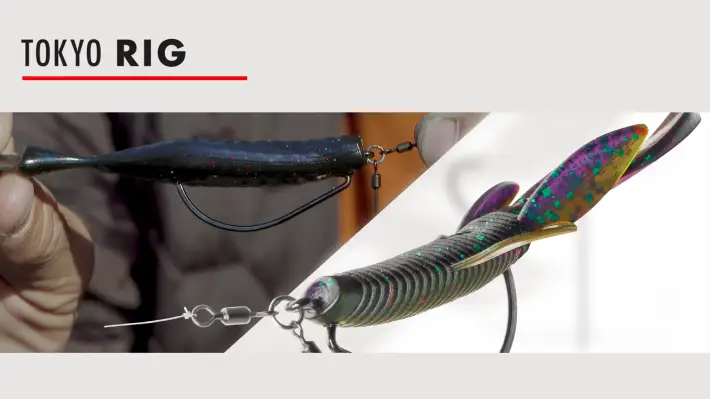
One important distinction between the Jika Rig and the Tokyo Rig for fishing is how the weight is positioned.
In the Jika Rig, the weight is attached to a snap swivel, which offers versatility and ease of weight changes. This lets you quickly adjust the weight according to the fishing conditions, such as depth or current.
Conversely, the Tokyo Rig places the weight directly on the split ring, providing stability on the bottom while the plastic bait hovers above. This weight placement allows for a unique presentation and action, as it keeps the bait off the bottom and mimics a natural swimming motion.
It’s weight positioning boosts the bait’s movement, making it more appealing to fish and boosting your chances of catching one.
No 07: Entry into Cover
Achieving successful entry into cover is influenced by the rig setup, with the Jika Rig and Tokyo Rig offering contrasting approaches.
With its traditional weight placement below the bait, the Jika Rig may encounter difficulties when entering cover. The weight is more likely to get caught on vegetation or structure, resulting in frustrating snags.
On the other hand, the Tokyo Rig’s unique weight placement, away from the bait, allows for a cleaner entry into the cover. By reducing the likelihood of snags, the Tokyo Rig provides an advantage when fishing in areas with dense vegetation or structures.
This feature makes the Tokyo Rig well-suited for heavy-cover fishing, where precision and maneuverability are crucial for a successful catch.
No 08: Adaptability in Retrieve
With its finesse-oriented design, the Jika Rig excels in imitating drop-shot or crayfish movements. Its retrieve style involves subtle twitches and hops to entice finicky fish.
Meanwhile, the Tokyo Rig offers various retrieval methods, making it a versatile choice for various fishing scenarios. Whether you’re punching mats, fishing swimbaits, or bed fishing, the Tokyo Rig can handle it all.
Its design enables anglers to experiment with different retrieves, such as slow dragging, hopping, or even swimming the bait.
With its adaptability, the Tokyo Rig allows anglers to adjust their retrieve based on the fish’s behavior and the prevailing conditions, ultimately increasing their chances of success.
Comparison Table Between Jika Rig and Tokyo Rig
| Aspect | Jika Rig | Tokyo Rig |
| Hook Configuration | Standard worm hook (3/0 or 4/0) | EWG hook |
| Weight Positioning | Below the bait, near the bottom | On the split ring, allowing the bait to hover above |
| Rigging Process | Split ring, snap swivel, weight, Texas rig soft plastic | Split ring, weight, Texas rig or direct threading |
| Versatility | Effective in bottom-feeding, spawning beds, crayfish areas | Versatile applications, including punching mats, bed fishing, swimbaits |
| Underwater Presentation | Imitates drop-shot and crayfish movements | Natural horizontal presentation with cleaner pickup |
| Heedlessness | Texas-rigged soft plastic for weedless presentation | Effective in punching mats, reducing likelihood of snags |
| Ease of Weight Changes | Snap swivel allows for easy weight changes | Weight on split ring facilitates quick and secure changes |
| Origin and Evolution | Evolved finesse rig with a history in bass fishing | Originated in Japan as a finesse rig, evolution of Jika Rig |
| Bait Positioning | Bait below the weight for a lifelike presentation | Bait slightly above the weight for a hovering effect |
| Community Adoption | Popular finesse technique with simplicity and effectiveness | Sparked interest and exploration, encouraging innovation |
What is a Jika rig used for?
The Jika rig is primarily used for fishing Smallmouth and Largemouth Bass. The combination of the wide gap hook and drop shot weight allows for a natural presentation that mimics the movement of prey.
When the Jika rig is cast, the weight causes the rig to sink to the bottom while the bait remains suspended. As you retrieve the rig, the wide gap hook and weight create an enticing action that triggers the bass to strike.
In my opinion, this rig is especially effective when bass are feeding off the bottom or when you want to target fish in deeper water. The Jika rig’s versatility and ability to imitate baitfish make it a valuable tool for any angler looking to target bass.
What size is the Jika rig?
As I know, the Jika rig comes in sizes of 3/8-ounce and 1/2-ounce sinkers. These sizes are commonly used in fishing to provide the necessary weight for casting and to ensure proper bait presentation.
The 3/8-ounce Jika rig sinker is lighter and more suitable for shallow water or smaller baits. It allows for a slower fall rate, enticing fish in calm or finicky conditions.
On the other hand, the 1/2-ounce Jika rig sinker is heavier and ideal for deeper water or when using larger baits. It provides a faster fall rate, enabling the bait to reach the desired depth quickly.
What is the purpose of a Tokyo rig?
A Tokyo rig is a versatile fishing tool that allows you to present bait effectively and entice fish in various underwater environments. This rig is designed to increase your chances of catching fish by providing a unique presentation.
The wire dropper on the hook allows you to position the weight below the hook at a further distance, similar to a drop shot rig. The Tokyo rig provides increased sensitivity and improved bait movement by connecting the weight to the hook via the wire.
Additionally, the Tokyo rig can be used with various bait types, including soft plastics, worms, and creature baits, making it a versatile tool for targeting different fish species. I believe whether fishing in shallow or deep waters, the Tokyo rig can help you effectively present your bait and increase your chances of success.
What size is the Tokyo rig?
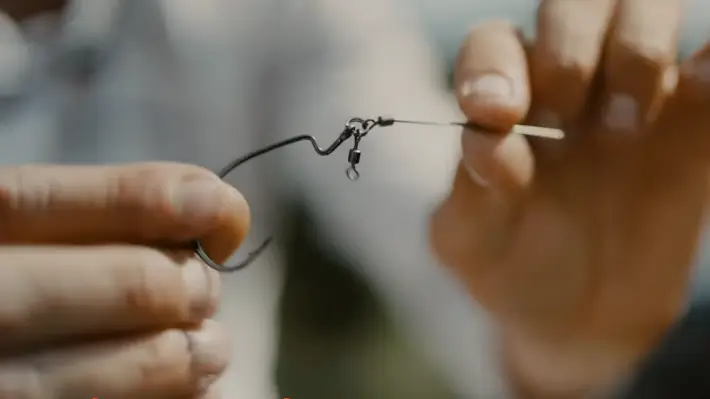
For the Tokyo rig, anglers typically use a 3/0, 4/0, or 5/0 size hook. I think the hook size depends on the angler’s preference and the type of fish they’re targeting.
The 3/0 size hook is smaller and is suitable for smaller fish species, while the 5/0 size hook is larger and can handle bigger fish. The 4/0 size hook is a middle-ground option that can be used for various fish sizes.
Choosing the right size hook is important to ensure that it fits the bait properly and allows for effective hooksets. Using the correct size hook will increase your chances of successfully catching fish with the Tokyo rig.
Jika and Tokyo Rigs: The Ultimate Weapon for Fishing
The differences between the Jika and Tokyo rigs for fishing are significant. The Jika rig is primarily used for finesse fishing and is smaller than the Tokyo rig. On the other hand, the Tokyo rig is designed for heavy cover and larger fish, making it more robust and larger.
I think both rigs have unique purposes and can be effective in different fishing situations. It is important to consider the type of fish you’re going after and what type of bait you’re using when selecting the right size hook.
Additionally, picking the correct size hook for your rig will also help increase your chances of catching bigger fish and successfully setting hooks. With these tips in mind, I’m sure you’ll be able to get the most out of both rigs.

